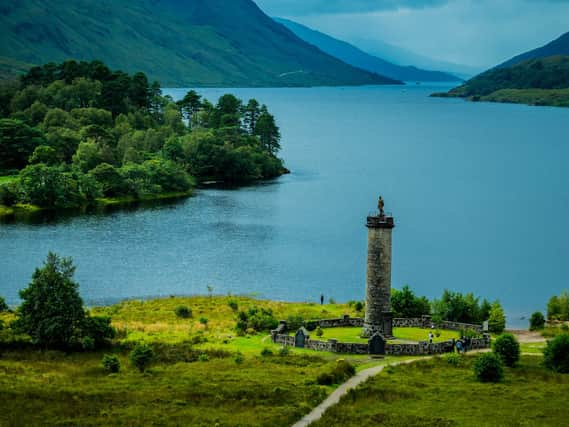History of Glenfinnan Monument rewritten as slavery connection emerges


The memorial at Loch Shiel was built using wealth created in the slave plantations of Jamaica by a Highlander whose descendants fought for the Jacobites during the rising, new research has found.
Bonnie Prince Charlie also arrived in Scotland on a French-owned ship, Da Tuilly, which was used for slave transportations, it has emerged.
Advertisement
Hide AdAdvertisement
Hide AdAccording to a report in The Guardian, National Trust for Scotland is now due to replace signs at the monument, which stands at the head of the loch, to include the new information.
Emily Bryce, NTS curator at Glenfinnan, said: “It’s not to downplay the fact that Glenfinnan monument will always be there to remember those brave Highlanders who died at Culloden, but we’d also like people to reflect on those brave people in Jamaica whose tragic story 4,500 miles away contributed to the monument as well.
“There are two parts of the history and I don’t want to not tell one or downgrade another.”
It comes as NTS conducts a review into links between its properties, their contents and the slave trade.
The conservation charity estimates that 36 of its buildings have some link to plantation wealth, including Culzean Castle in Ayrshire, Pollok House in Glasgow, Brodie Castle in Moray and the Burns Cottage in Alloway.
The monument’s associations with the slave trade were uncovered by Dr Karly Kehoe, a Canadian academic researching Scottish migration to Nova Scotia.
The monument was built by Alexander Macdonald, the 10th Laird of Glenaladale, the only son of Alexander “Golden Sandy” Macdonald, in 1815.
According to the newspaper, Golden Sandy bought the estate from his cousin, John Macdonald, using the profits of his coffee plantation in Jamaica and the wealth of his first wife, a plantation owner who died after their marriage.
Advertisement
Hide AdAdvertisement
Hide AdIn 1745, Alexander Macdonald’s grandfather and three uncles welcomed Stuart to Glenfinnan and fought with him during the Jacobite rebellion, the report said.
Dr Jennifer Melville, a historian leading the NTS review, which is called Facing Our History, said: “We’re just trying to find out as much as we possibly can about all of our portfolio. If you care for a heritage portfolio it is your duty to know about that portfolio and I think in the past we’ve looked at that history in a very linear patriarchal way.
“As society changes, we need to look at it in a more textured way. All of our properties are palimpsests really, and they have a layered history which is complex. And Scotland’s history is complex.”
Research has been ongoing at NTS-owned Culloden Battlefield and Visitor Centre near Inverness to investigate the Jacobite exiles who went on to own plantations in the West Indies and the hundreds of people deported as indentured servants following the failed rising.
One ship left Liverpool on May, 8, 1747, bound for the Leeward Isles with 150 Jacobites on board.